Astrophotography Telescope Buying Guide – Under $2000
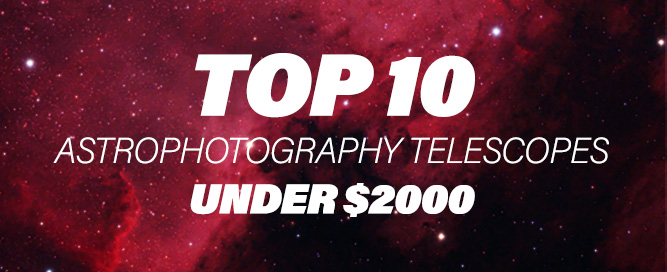
Astrophotography Telescope Buying Guide
Note: This post was created back in July 2015, I have since purchased a new astrophotography telescope, the Explore Scientific ED102 (The number 1 telescope on this list)!
So you’re in the market for an astrophotography telescope, are you? There have never been so many affordable options for the amateur astrophotographer on a tight budget. I am often asked which telescope I use, and which one I would recommend for beginners. The quick answer is a high-quality, doublet or triplet refractor.
Larger models can be very expensive (and heavy!) due to the high-quality ED glass used. I think you will be quite surprised at the performance of a small 65-80mm refractor such as the Explore Scientific ED80 I currently use for astrophotography. To view the types of wide-field images I have taken using this small telescope, please visit my photo gallery.
An astrophotography telescope buying guide? I thought you were an amateur. Yes, it’s true, but I decided that since I was doing all this intense research into which telescope I will be buying next, I would share it for others in my position to help streamline your search.
I have researched refractors made by Orion, Meade, Sky-Watcher, Tele Vue, Takahashi, Vixen, Astro-Tech, Explore Scientific, Stellarvue and William Optics. Please remember that this is my personal list, and I am by no means an expert! I tried to keep a high standard when browsing for telescopes.
All of the telescopes on this list are apochromatic refractors. I hope this top 10 list is useful for anyone looking to buy a refractor telescope for imaging under $2000 US.
Keep in mind that with my limited budget, I am interested in getting the best balance of aperture, performance, and quality I can afford. A high-end instrument like the 76mm Takahashi might be the number one choice on your list, but it doesn’t make sense for my situation. So without further adieu, here is MY top 10 list of refractors for astrophotography:
10. Tele Vue TV76
Thanks to Marc Fitkin, there is an extremely useful and insightful review of this telescope on his blog. He notes the ability to use this scope as a prime lens for daytime photography as well as astrophotography. Tele Vue telescopes have a reputation for being top-quality instruments that will last a lifetime.
Because I will be using this scope for astrophotography exclusively, a model that excels in visual use has less of an impact on me. The reason this high-quality scope lands at 10 on my list is because it is at the extreme end of my budget, yet has an objective of only 76mm. Maybe one day I will be in a position to purchase premium-priced optics, but not yet.
Price: $2,000 US
Accessories Included: Ring Mount, 20mm Eyepiece, 2″ Diagonal, 1.25″ Adapter, Custom Soft Case
9. Sky-Watcher 80mm Esprit ED
This is another model that comes with an aluminum case, diagonal, and a finder scope – a huge bonus for me. The heavy-duty Sky-Watcher exclusive “Helinear Track” focuser is a nice touch. This scope actually includes a thread-on field flattener and adaptor for Canon cameras! A major selling point for someone like me.
I do, however, wonder how much of an upgrade this would be to my current ES ED80. The built-in dovetail is a turn-off for some, but I think it is a great feature. It is nice to see companies like Sky-Watcher catering to astrophotographers, a trend I am sure that will continue.
Update: I had the amazing opportunity to try out the Sky-Watcher Esprit 100 ED APO in 2018
Price: $2,230 US (Agena Astro)
Accessories Included: Thread-on Field Flattener, 2.7″ to 2″ Adapter, 2″ to 1.25″ adapter, 2″ Diagonal, Canon Camera Adapter, Tube Rings with “V” Dovetail, Carry Case
8. Takahashi FC-76DC
I can’t believe there is actually a Takahashi under $2000! Takahashi has a reputation for building a superior quality astrophotography telescope. This fluorite doublet is tied with the Tele Vue for smallest objective on this list. This instrument has the highest quality glass of all the telescopes on this list, and is very lightweight (4 lbs).
This telescope operates at a f/7.5 focal ratio, and includes a fixed dew shield. The downsides for someone in this budget are the small objective and 1.25″ focuser (though it can be adapted to 2″ with an additional accessory). The views through this “Tak” have been described as absolutely stunning.
Price: $1,949 US
Accessories Included: None
7. Vixen ED103S Refractor
The official product description from Vixen states “ED103S lenses are almost free of chromatic aberration in all colors and are critically sharp edge to edge. The astro-photographer will be especially pleased with the high contrast images through this telescope.”
The dual speed focuser, 4.1″ objective, and overall weight of just 8 lbs is what has me interested in this white beauty. Not to mention that it’s short tube length of 31.5″ makes it extra portable. A handy in-depth look at this instrument written by Pernel Johnson can be found here.
Price: $1,799 US
Accessories Included: Tube Rings, Carry Handle
6. Meade 115mm ED APO
Meade has catered to the next generation of imagers with this astrophotography telescope. The older version of this scope was almost identical to the Orion EON 115mm. The newer Series 6000 model uses an upgraded FK61 extra-low dispersion glass. Some notable features are the 3″ Crayford focuser, sliding dew shield, and overall build quality.
Update: In 2017, I had the opportunity to test the Meade 70mm Quadruplet APO
Price: $1,999 US
Accessories Included: 3″ Diagonal, Cradle Rings, Mounting Dovetail, 8 x 50 Viewfinder, Hard Case
5. Stellarvue SV80ST
Forum users on astronomyforum.net reported that this Stellarvue Apo has an easy-to-use, well-built focuser. It allows the entire imaging train to screw together, giving you accuracy and stability when imaging. A flattener is a must-have to accompany this scope to eliminate coma, a trait many of these refractors have indeed. User reviews are very high for this precision instrument with the focuser being the biggest draw.
Price: $1,295 USD
Accessories Included: Tube Rings, Hard Case
4. Astro-Tech AT106
Sky and Telescope reviewed this scope back in 2009, saying: “the Astro-Tech AT106 provides all the benefits of a first-class 4-inch apo but without the premium price. I highly recommend it.” I have found a number of positive reviews about this modestly sized refractor.
There is a great in-depth look including sample astrophotos at the scope on Stargazerslounge.com. This astrophotography telescope uses high-quality Ohara glass, and comes with a dual speed 2.7″ Crayford focuser. At just under the $2000 range, (including an aluminum case) This telescope is definitely a top contender for my hard-earned cash.
Update: It appears as though this telescope is no longer available.
Price: ?
Accessories Included: Hard Case
3. Orion EON 115mm ED
An astrophotography telescope from one of the oldest most trusted brands in the hobby. Time after time, Orion products deliver and continue to impress their reviewers. My first telescope was an Orion, so this brand holds a special place in my heart. This APO has been around for a LONG time. (I found a review from 2006!)
This quality instrument offers excellent color correction by way of the FK-61 extra-low dispersion (“ED”) optical glass in its air-spaced triplet objective lens. With a focal length of 805mm at F/7, this is a fast, medium wide-field scope. The extendable dew-shield and multiple knife-edge baffles protect your eyes from off-axis reflections and glare to ensure a view with excellent contrast.
The extra aperture for the price is what puts this scope near the top of my list. The massive 3″, rotatable , dual-speed focuser is an attractive feature for astrophotographers.
Price: $1,499 USD
Accessories Included: Tube Rings, Dovetail Bar, Foam-lined Carry Case, Starry Night Software
2. William Optics GT102
There are many fans of William Optics, and for good reason, they make quality instruments for a fair price. The focal ratio, 102mm diameter objective, and reputation of this scope make this one of my top choices for “next scope”. The optional DDG digital readout on the focuser is a neat feature, and would help me achieve accurate focus with my camera.
I own the WO 72mm Megrez Doublet, and have had many great experiences with it for both astrophotography, and daytime nature photography.
Update: It appears as though the older version of this telescope is no longer available, and only the 20th anniversary edition is now for sale. Unfortunately, it now has a price tag that exceeds $2,000 USD! However, if you are looking for a more affordable option, have a look at the William Optics Z61.
Price: $2,400 US
Accessories Included: 2″ to 1.25″ Adapter, Mounting Rings, Dovetail
1. Explore Scientific CF 102mm
With over 4″ of aperture, and weighing just 7 lbs – Explore Scientific calls this the “perfect balance between portability and light gathering power”.
The HOYA ED glass is virtually free of chromatic aberration, and produces bright high-contrast images. The carbon fiber tube is highly temperature stable, eliminating the need for focus changes with temperature fluctuations. I am not going to lie, I am a little biased towards this telescope because of my unbelievably positive experience with the ED80.
Update: June 2016 – I bought this telescope!
I was contacted by Explore Scientific to upgrade my ED80 to the 102mm CF! Since then I have photographed many deep-sky objects including this version of the Lagoon Nebula:
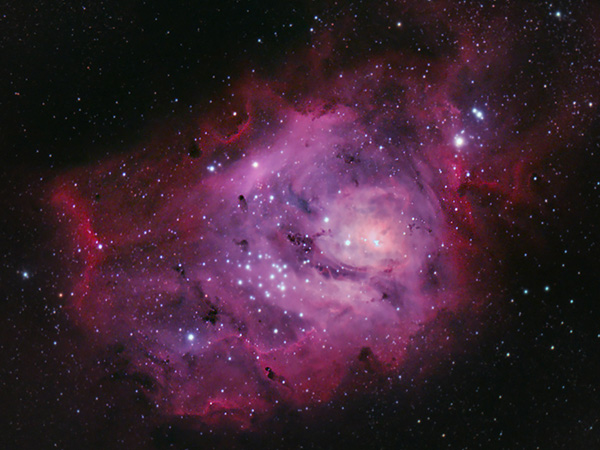
Price: $1,099 USD
Accessories Included: 2″ Diagonal, Deluxe Case, Finder Scope Base, Vixen Dovetail
Well, there you have it, my top 10 list for anyone in the market for an astrophotography telescope. As you can see, I plan on sticking with Explore Scientific. At the end of the day, it comes down to value for me. If you have any hands-on experience with any of these telescopes and would like to comment, please do so below – I would love to hear them!
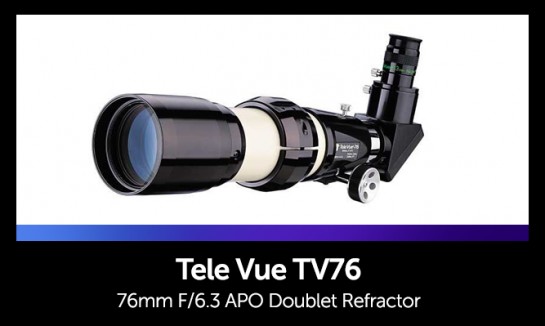
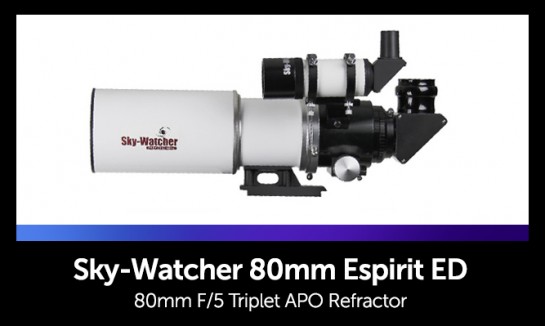
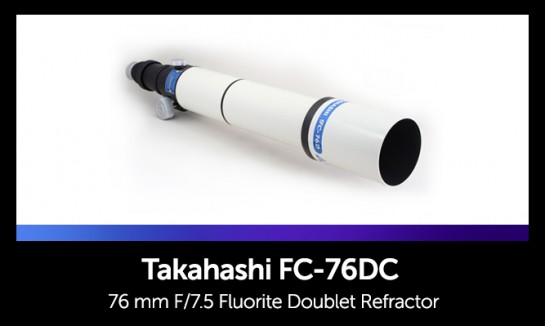
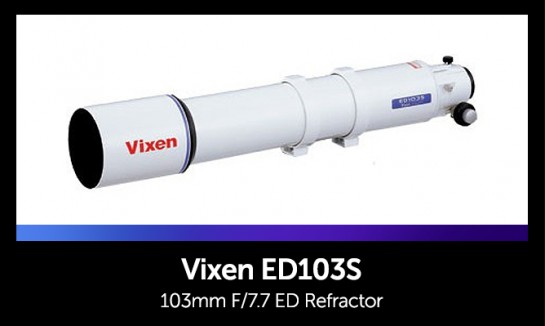
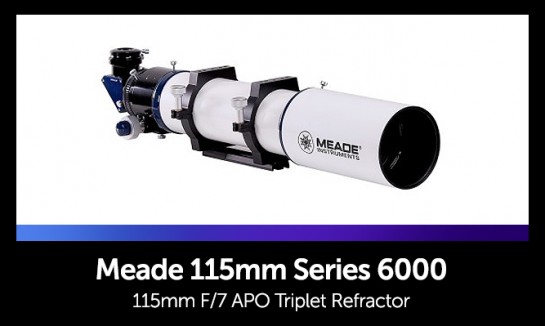
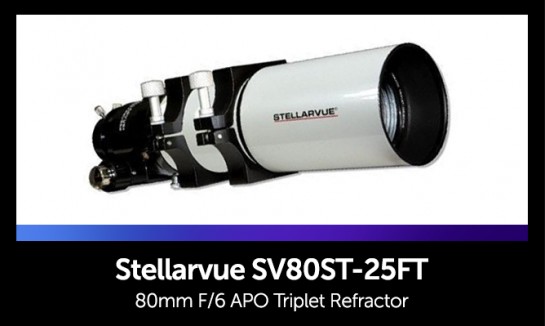
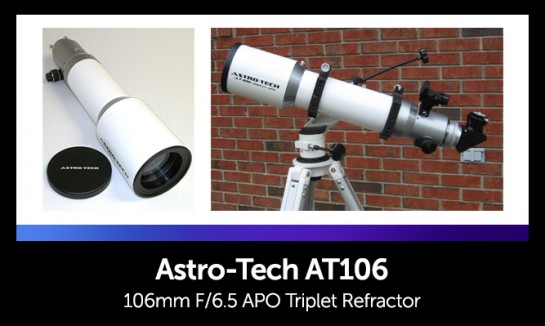
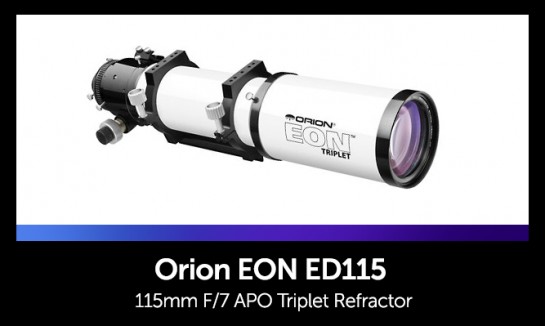
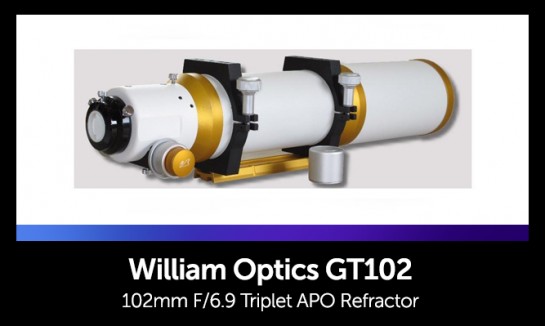
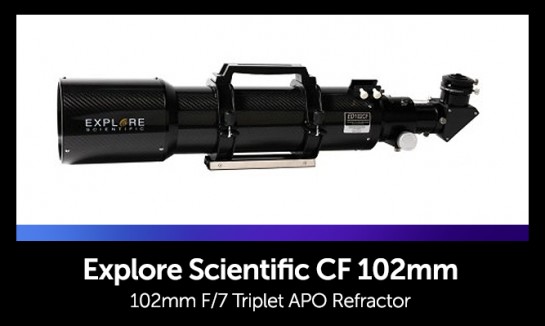


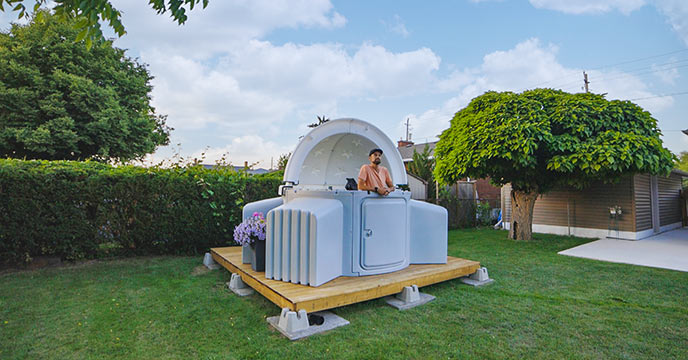
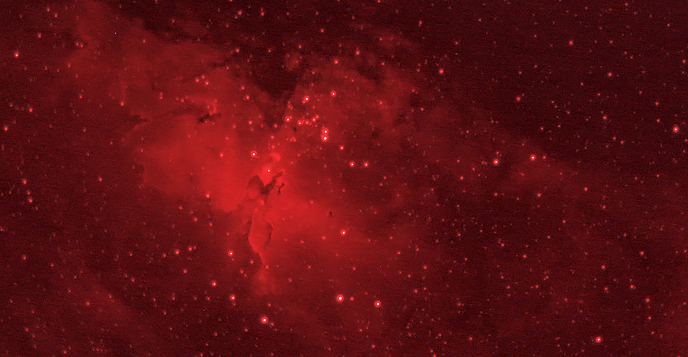
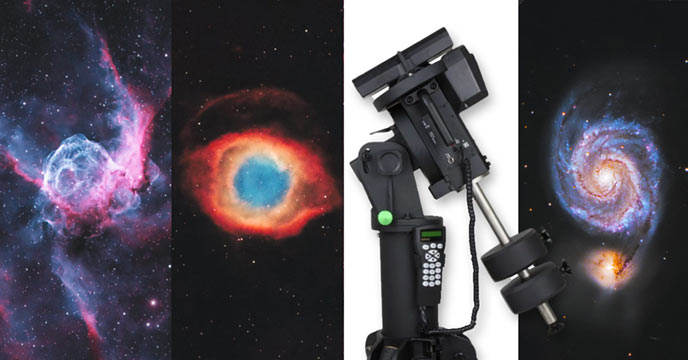
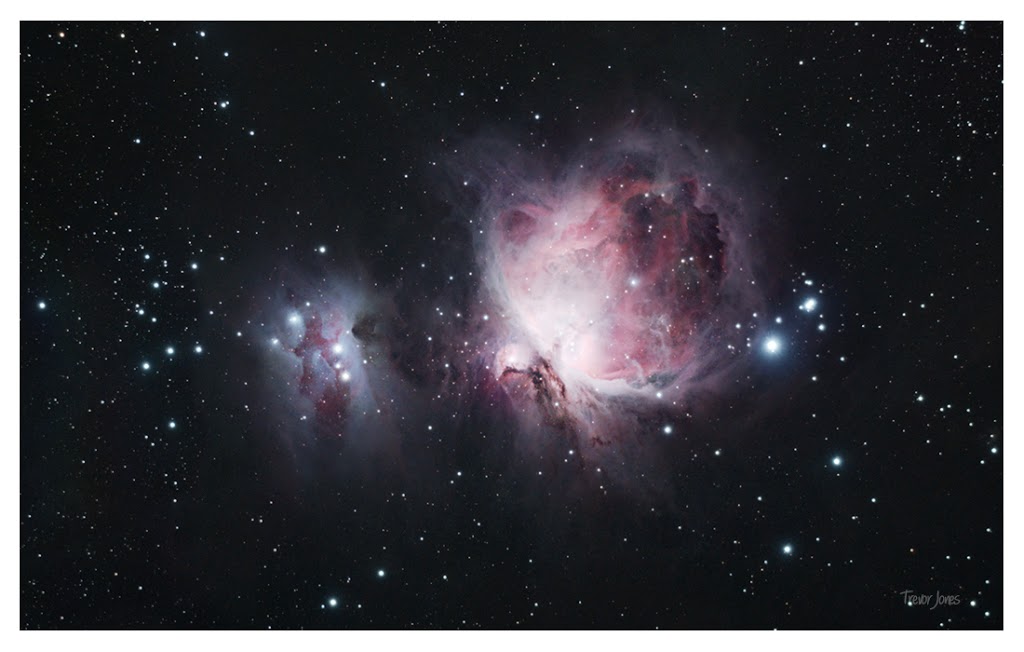
How do you like the focuser on the ES CF 102mm? Is it easy to use to focus and maintain for astrophotography?
Funny you mention that – I will be upgrading to a Pegasus motorized focuser this week! However, I found the stock focuser to work fine for astrophotography purposes. The main thing to remember in to screw/unscrew the locking bolt underneath the draw tube once you have found focus. I’ve had to use a number of extension tubes for different cameras when using the ED102.
Hi Trevor. Would you recommend the WO GT81 or the Meade Series 6000 80mm Triplet? And why?
Thanks
Although I have been interested in space and space travel from the age of 10 (back in the 1950s); I have just recently purchased my first (used) telescope and need help understanding it’s use and capabilities. It is a Magnicon Universe 1000. The lens is marked “NEWTONION f/8.7, D=114mm & F=1000mm”; it came with 2 eyepieces and a tripod mount. There is no identification on the mount, but I am attaching a photo if that helps.
1st eyepiece is marked “Japan, MOON, H=6mm”
2nd eyepiece is marked “Japan, SUN, H=20mm
I am in Peterborough and have it available to view the southern and eastern directions from my condo.
During the nicer weather I can move it to the top floor deck for 360 degree viewing.
Any information and/or instructions you could give me would be of enormous help and be greatly appreciated. Thank you.
Any thoughts on the Stellarvue 102mm Raptor?
Hello Trevor I am new to Telescopes but not photography. In my beginning research I found the best telescopes are Refractor’s. I thought it best to purchase a telescope “KIT” already paired up with with a computerized mount or tripod. Odd that I have only found one company that offers this. My budget is $3,000, so am looking at the Meade LX85 115 mm triplet apo refractor. Please give me your thoughts. Thank you Randy